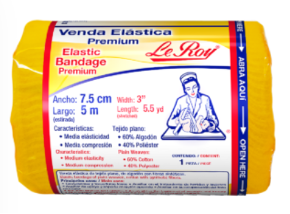For Further Information Contact:
Mexico Update: ACQUIRED DISTINCTIVENESS (SECONDARY MEANING) IN MEXICO
31/08/2022The distinctiveness acquired by use allows a trademark devoid of inherent distinctiveness or origin (being, for example, descriptive or generic), to demonstrate that it has acquired that quality as a result of the constant and notorious use previously made of it and, therefore, to obtain a registration. The distinguishivity acquired does not imply that the sign which protects is less distinctive than another which originally had that character, since the second meaning which it acquired refers to a second moment, that is to say, which originated later as a result of the constant use of the sign on the market and the recognition by consumers, hence even the term “secondary meaning”.
Thus, in our country, the figure of acquired distinctiveness or secondary meaning, was introduced from the 2018 reform to the repealed Industrial Property Law, and was preserved in the Federal Law on the Protection of Industrial Property (LFPPI) that entered into force on November 5, 2020. However, this legal figure was already protected through various International Treaties to which Mexico is a party.
The recognition of the figure of distinctiveness acquired in our legislation undoubtedly represents a great advance for the industrial property system, since it provides greater tools to promote healthy competition in the market.
Although, in principle, in our legal system trademark rights are acquired through registration, the distinctiveness acquired makes this regime more flexible, giving value to a matter of fact, which is the use of the sign prior to registration, and establishing an important exception to certain impediments of registrability of an absolute nature contemplated in Article 173 of the LFPPI.
Consequently, the applicant for a trade mark registration must demonstrate that, as a result of the use made of the trade mark, distinctiveness was acquired precisely, so that the sign can fulfil the main function of the mark, that is, to distinguish goods and services from others of the same class or kind on the market, and that consumers can associate that sign with a specific business origin.
In this sense, the distinguishivity acquired also implies that the sign is not used by competitors, but by a single producer or proprietor on the market, and in the same way, that the nullity of a trademark registration already granted can be avoided by demonstrating that through intense use it has acquired distinctiveness.
Returning to the provisions of our legislation, article 173 of the LFPPI establishes that, a descriptive, generic, usual sign, of the public domain, letters, digits or a sign made up of a color considered in isolation, in principle may not be registered for incurring an absolute prohibition. However, if this originally non-registrable sign acquires distinctive capacity by virtue of its use, it may access the register. For its part, article 231 of the same legal system states that a title will be issued for each trademark in which the circumstance that it was granted for acquired distinctiveness, if any, will be recorded.
Our legislation does not establish how it can be demonstrated that a sign has acquired distinctiveness, and refers that it will be in accordance with the Regulations of the law, however, which LFPPI does not yet have Regulations, leaving to the free discretion of the authority the evaluation of the evidence that is provided by the owner to demonstrate the acquired distinctiveness.
Recently, the concession by the Mexican Institute of Industrial Property (IMPI) of the registration as a trademark of the following isolated color, belonging to Laboratorios Le Roy, S.A. de C.V. was criticized.

Registration No. 2412700)
The truth is that, when observing this sign, it does not refer at all to a distinctive character that can be associated with a specific business origin. However, we have that the same was granted to specifically protect bandages for international class 05 dressings.
According to the records in the IMPI file and the evidence that was provided to prove the acquired distinctiveness of the Pantone 116C Yellow color, this color has been used by Laboratorios Le Roy since 1974 in Mexico to identify its elastic sales:

The evidence provided to the IMPI to prove the distinguishability of the Pantone 116C Yellow color, as a brand, consists of a market study, physical samples of the product, advertising and registrations granted in Mexico and abroad that include the color yellow.
The granting of the trademark registration of the isolated yellow color to identify bandages for dressings of the international class 05, is an important precedent in the Mexican industrial property system, since the LFPPI indicates as an absolute prohibition the registration of isolated colors, although it also establishes as an exception that said isolated color may access the registry when it is demonstrated that it acquired distinctive capacity by virtue of its use.
Beyond the criticism of the granting of registration as a trademark, it must be considered whether the evidence provided by Laboratorios Le Roy is indeed sufficient to prove that an isolated color acquired distinctiveness due to its constant use in the Mexican market to identify elastic bandages and that, consequently, an exclusive right must be granted over its use, preventing third parties from using it. This, because it is essential to analyze whether consumers perceive the sign as an identifying mark of products, and with it, as a denotator of their business origin.
Here, it is worthy of particular attention to determine the capacity and strength with which the registration of the yellow mark (Pantone 116C) can be asserted against third parties, since the prohibition of third parties that concur in the industry of healing material, medical devices, pharmaceutical specialties, hospitals, orthopedic and sports protection elastic articles can be considered excessive, to use the same or a confusing color to identify your products.
Indeed, it is necessary to weigh the strength and capacity with which the registration granted to Laboratorios Le Roy may be asserted against third parties competing in the same industry, because the LFPPI provides that it will be an administrative infringement to use a registered trademark or a similar one in a degree of confusion to it, to be applied to the same or similar products or services, in which case, the scope of the registration granted for an isolated color could be extended to similar or related products and to the same or a similar color in a degree of confusion, leaving the line to determine this very limited, since great dissimilarity between the same color cannot be requested.
In this sense, it should definitely be weighed in each case, if the third party that is using an equal or similar color, has the purpose of taking advantage of the prestige of the sign and mainly causing confusion in consumers, because if this issue is not assessed, it would be granting the registration as a trademark of an isolated color, an excessive protection that is constituted as an excess within the industrial property system in Mexico; it would be interesting to see what approach the IMPI takes on the matter, even on the basis that many of the criteria among the Trademark Directorate sometimes vary greatly from the Intellectual Property Protection Directorate.
By Jáuregui y Del Valle, S.C., Mexico, a Transatlantic Law International Affiliated Firm.
For further information or for any assistance please contact mexico@transatlanticlaw.com
Disclaimer: Transatlantic Law International Limited is a UK registered limited liability company providing international business and legal solutions through its own resources and the expertise of over 105 affiliated independent law firms in over 95 countries worldwide. This article is for background information only and provided in the context of the applicable law when published and does not constitute legal advice and cannot be relied on as such for any matter. Legal advice may be provided subject to the retention of Transatlantic Law International Limited’s services and its governing terms and conditions of service. Transatlantic Law International Limited, based at 42 Brook Street, London W1K 5DB, United Kingdom, is registered with Companies House, Reg Nr. 361484, with its registered address at 83 Cambridge Street, London SW1V 4PS, United Kingdom.


